Engineering comparison of Qualcomm AR1 Gen1 paired with Bestechnic BES2700BP and BES2800BP for smart glasses. Covers die size, ISP throughput, NPU TOPS, power curves and BOM cost to help OEMs choose the right 2025 platform.
Posted At: 8月 03, 2025 - 3 Views
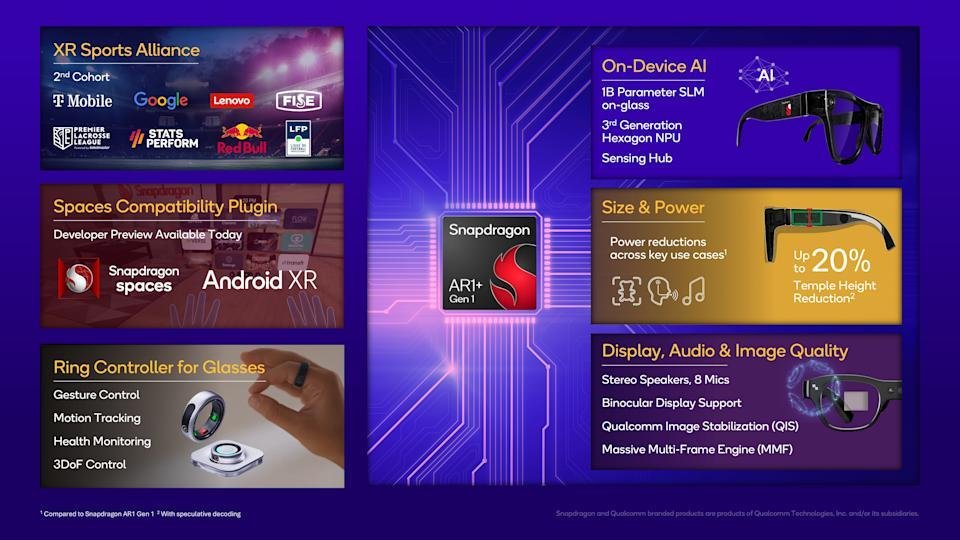
The smart glasses market is gaining momentum, with major players like Xiaomi and Alibaba launching their AI-powered smart glasses. Xiaomi's AI glasses, leveraging a Qualcomm AR1 and BES2700 chip solution, sold over 50,000 units in just three days. Alibaba followed suit with its "Wow - Quark AI Glasses," employing a Qualcomm AR1 and BES2800 configuration. Meanwhile, Meta's Ray - Ban Meta AI glasses, featuring the Qualcomm AR1 Gen1, have surpassed 2 million units in shipment.
The Qualcomm AR1 Gen1, launched in September 2023, is a specialized processor platform for lightweight AI/AR smart glasses. It adopts a 6nm process, offering high integration and low power consumption. Its multi - core architecture includes a high - efficiency CPU and GPU, capable of handling complex computations and real - time image processing. The integrated third - generation Hexagon NPU supports features like visual search, real - time translation, and directional audio capture. It also supports up to 1280×1280 full - color single - eye display, with dual - eye resolution meeting the needs of lightweight AR glasses.
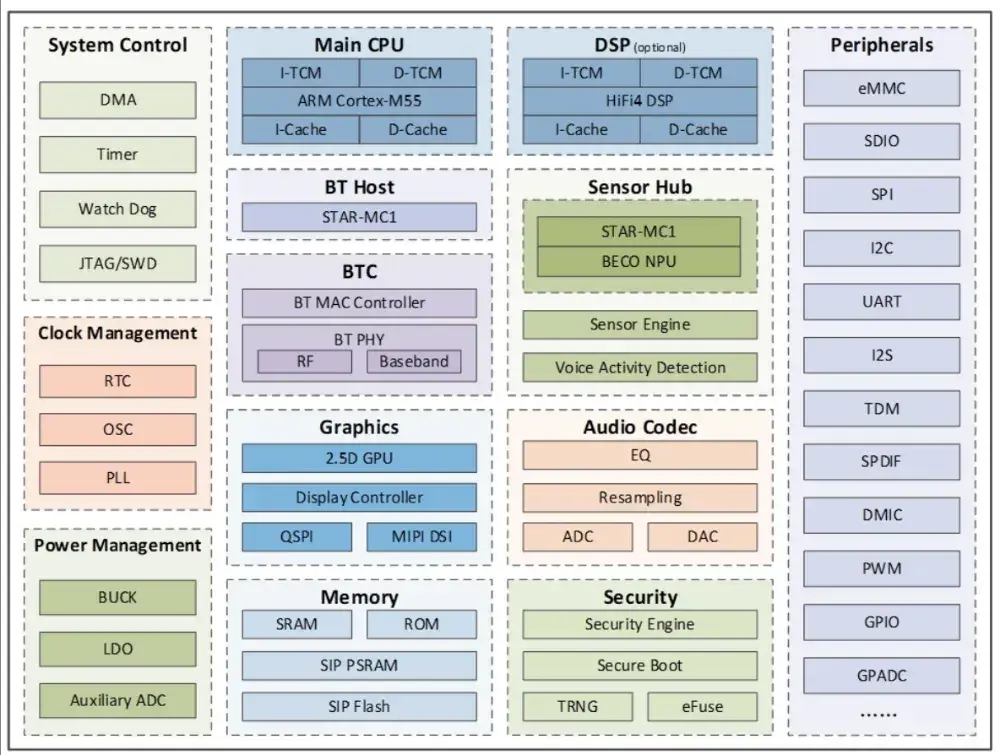
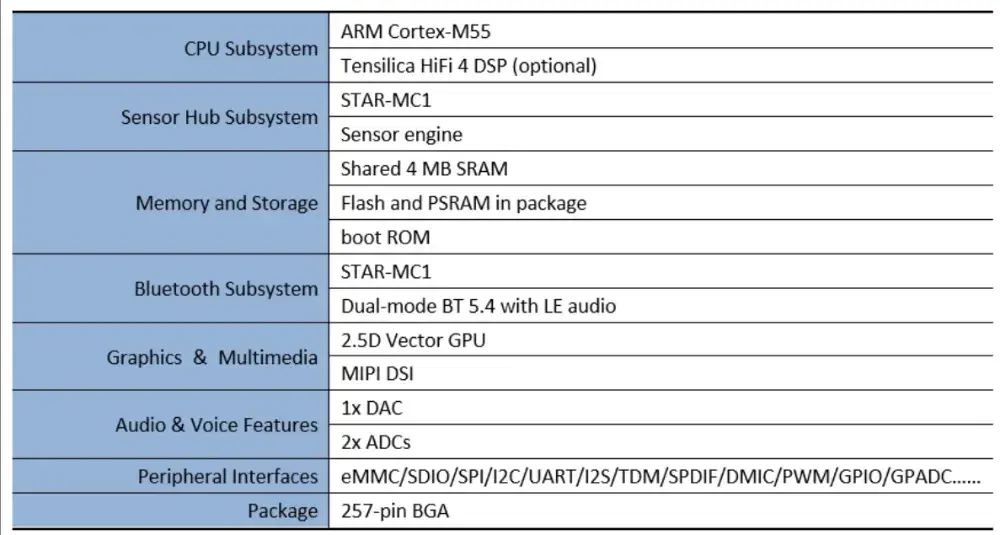
The chipset facilitates the fusion of various sensors such as IMU, depth cameras, and ambient light sensors. This enables real - time monitoring of the user's spatial position and environmental features, enhancing the precision and user experience of AR applications. Focusing on photography, the first - generation Snapdragon AR1 platform features a 14 - bit dual ISP, supporting up to 12-megapixel photo shooting and 6 - megapixel video shooting. It incorporates many photographic features from smartphones, such as automatic exposure, automatic face detection, computational HDR, and portrait mode.
The first - generation Snapdragon AR1 platform is also scalable, supporting different forms of smart glasses. Manufacturers can customize combinations and configurations based on their needs, such as choosing whether to include 3DoF sensors, color displays, or richer visual effects. Additionally, the platform is equipped with Qualcomm's FastConnect software suite for XR, supporting Wi - Fi 7 wireless networks and Bluetooth 5.2 and 5.3 for smoother and more stable connections.
BES Technologies offers three main chips for smart glasses: BES2700BP, BES2800BP, and BES2800HP. The BES2700BP is a low - power, high - performance Bluetooth wearable SoC. It integrates a powerful CPU subsystem, including an Arm Cortex - M55 processor and an optional Tensilica HiFi4DSP, an audio codec subsystem, and a sensor hub subsystem. This combination delivers strong application processing capabilities while significantly reducing power consumption.
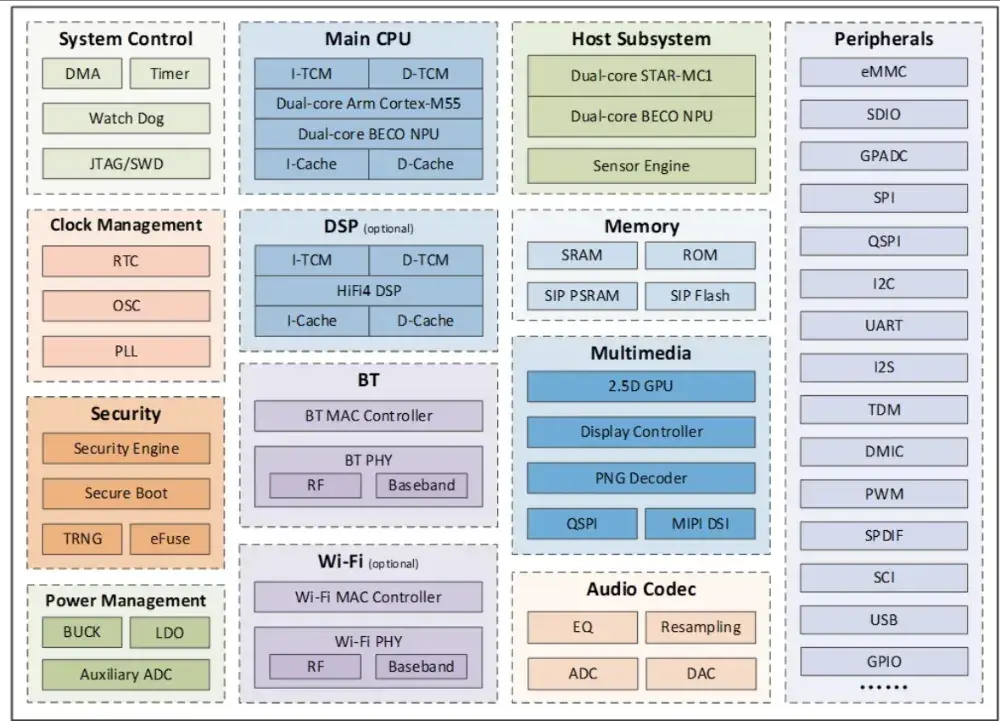
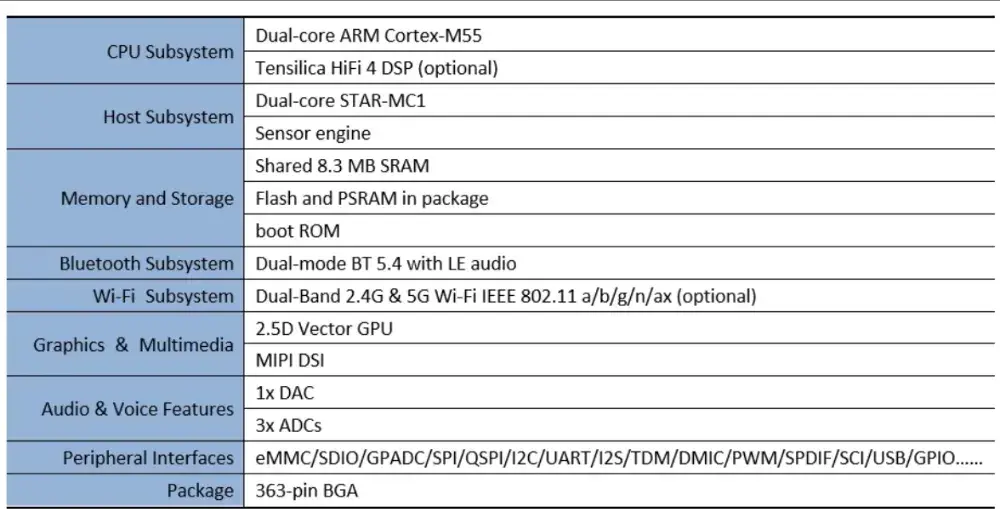
The platform also incorporates a dual - mode Bluetooth 5.4 subsystem, supporting both classic Bluetooth and LE audio. Furthermore, it includes a multimedia subsystem equipped with a 2.5D GPU for advanced graphics functions, an LCD controller supporting up to 4 - layer alpha blending, and a 2 - channel DSI, capable of supporting resolutions up to 500x500x32 bits at 60 frames per second.
The BES2800, manufactured using a 6nm FinFET process, integrates multi - core CPUs/GPUs, NPUs, large - capacity storage, low - power Wi - Fi, and dual - mode Bluetooth. This results in significant improvements in performance, power efficiency, and technological innovation, providing robust computing power and high - quality seamless connectivity for wearable devices like TWS earphones, smartwatches, smart glasses, and hearing aids.
The BES2800 - based smart glasses solution, with fully integrated audio input and output, enables local operation of lightweight models. Its low - power dual - mode Wi - Fi/BT allows rapid interaction between some online voice AI demands and the cloud. It also works with mainstream ISP chips to form a multimodal smart glasses system featuring video and photo functions as well as image recognition, achieving longer wear time.
As a powerful low - power wireless audio processing system, the BES2800 meets professional audio devices' requirements for multi - stream, high - bandwidth, low - latency, and long - lasting audio transmission. Unlike conventional Bluetooth controllers that only support narrow - band Bluetooth audio transmission, the BES2800 platform utilizes low - power Wi - Fi protocol transmission, achieving over 30 times the data rate and millisecond - level latency.
With the growing demand for AI computing power in wearables and no significant increase in battery size, it's essential for SoC chips to adopt advanced processes to enhance computing power and reduce power consumption. BES has developed a new - generation NPU and ISP system to boost the SoC chip's computing performance under low - power conditions. The new NPU offers stronger computing power at lower power levels, with a peak computing capacity reaching the TOPS level. It supports dynamic switching of the number of MACs to adapt to different computing power and model scenarios, achieving optimal power and performance allocation. It also supports various lightweight CNN and RNN models, facilitating the rapid deployment of customized AI algorithms by customers.
The company's self - developed ISP supports camera with up to tens of millions of pixels and features multi - camera fusion technology, dual - exposure HDR technology, and camera motion fusion technology. These enhance the platform's adaptability to smart glasses and other applications. Additionally, the ISP incorporates camera post - processing characteristics. Through hardware - accelerated processing, wearable platforms can quickly process video and image signals at extremely low power levels, delivering the output to users.
Another bottleneck in local AI computing power operation is efficient memory bandwidth. To address this, the company has developed new - generation low - power LPDDR and MIPI PHY high - speed interface technologies. These significantly optimize the power consumption of AI operation on wearable devices, extending battery life.
BES's wearable platform chips are gradually transitioning to a more advanced 6nm FinFET process, which substantially reduces digital power consumption compared to previous processes. As the market's demand for low - power wireless transmission continues to rise, the company has utilized the fast speed and low power consumption of advanced - process digital circuits. It has developed a new digital - architecture - based Bluetooth transmitter system and commercialized it, with transmission power adaptively adjusting according to performance. In wireless reception, a new - generation receiver has been developed, achieving significantly improved sensitivity and transmission distance under the same power consumption.
According to sources, BES's smart glasses SoC chip project primarily focuses on single - chip integration of low - power display technology, image sensing technology, and orientation acceleration sensor technology. It also aims to upgrade multi - protocol and multi - standard wireless transmission technologies.
The BES2800 employs a system - level SoC solution. Using a 6nm process, it integrates multi - core CPUs/GPUs, NPUs, low - power Wi - Fi, and Bluetooth modules, providing high - performance computing and connectivity for AI glasses. However, to meet the shooting function requirements of AI glasses, it needs to be paired with an external ISP chip.
Currently, AI glasses solutions mainly include single SoC solutions, MCU - level SoC + ISP solutions, and SoC + MCU solutions. These solutions are competing against each other. According to IDC data, global smart glasses shipments are expected to reach 12.05 million units by 2025, representing an 18.3% year - on - year growth. Smart glasses are likely to experience explosive growth driven by major manufacturers and a thriving industrial chain.

